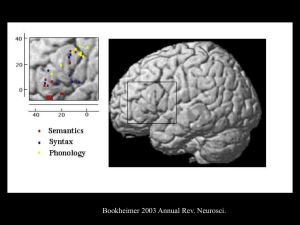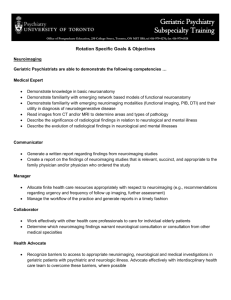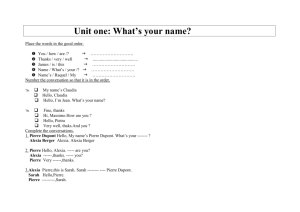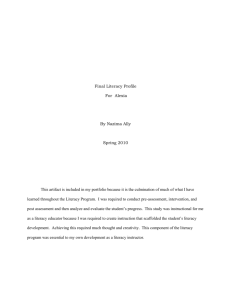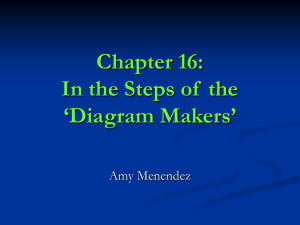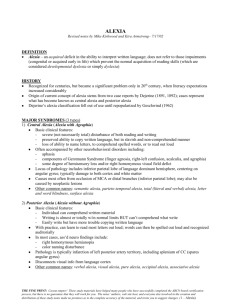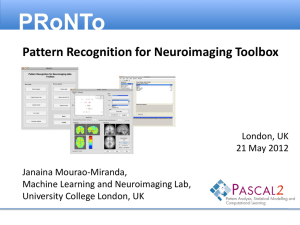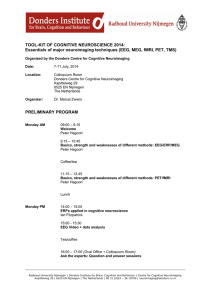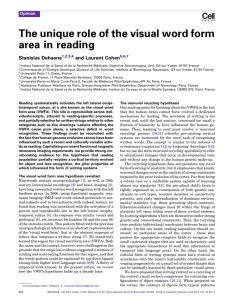Alexia Without Agraphia (novel.utah.edu)
advertisement
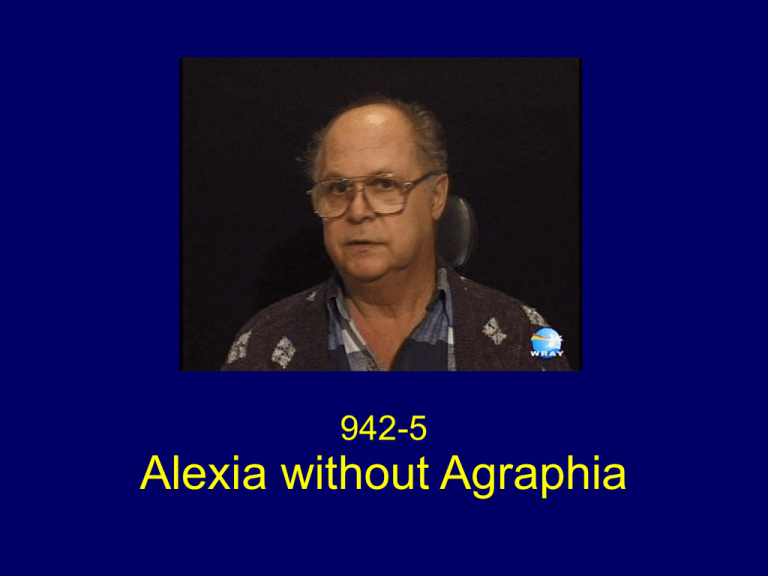
942-5 Alexia without Agraphia Neurovisual Exam Visual acuity 20/60 or better OU (made error reading Snellen chart) Fields: Dense right homonymous hemianopia Pupils: equal, normal reflexes Full eye movements Normal discs and fundi OU Visual Fields Figure 1. Automated perimetry showing dense right homonymous hemianopia Color Vision Ishihara pseudo-isochromatic test of color vision performed without error Read single and two digit numbers by tracing them out correctly with his finger Unable to name color correctly (color anomia) Named red and blue bottle caps correctly Named green, purple and yellow, orange Matched two red objects correctly Visual Tests Correctly identified 2 out of 3 famous faces No visual disorientation - simultanagnosia Neurological Exam Slight right facial weakness A mild right hemiparesis with right pronator drift Mild hyperreflexia on the right with an extensor plantar No sensory extinction, apraxia, astereognosis, or agraphesthesia Stroke Presentation Alexia with agraphia A dense right homonymous hemianopia Color anomia Neuroimaging A repeat MRI with DWI showed a new left occipital lobe infarct in the distribution of the left P2 division of the posterior cerebral artery (PCA). Neuroimaging Series of axial FLAIR scans shows a posterior cerebral artery infarct involving the occipital lobe and splenium of the corpus callosum Neuroimaging Neuroimaging Neuroimaging Neuroimaging Disconnection Syndrome Figure 2. Connections involved in naming a seen object and in reading. The visual pattern is transferred from the visual cortex and association areas to the angular gyrus, which arouses the auditory pattern in the Wernicke area. The auditory pattern is transmitted to the Broca’s areas, where the articulatory form is aroused and transferred to the contiguous face area of the motor cortex. With destruction of the left visual cortex and splenium (or intervening white matter), words perceived in the right visual cortex cannot cross over to the language areas and the patient cannot read. Criteria for Diagnosis of Pure Alexia Severe disturbance of reading comprehension Linguistically correct writing spontaneously and to dictation Normal oral spelling Absence of aphasia and dementia Damasio’s Criteria for Color Anomia Damage to the left lingual gyrus Damage to the left hippocampal region (hippocampus plus parahippocampal region) Presence of right hemianopia Reading Psychologists have noticed that pure alexics often read slowly, pronouncing or naming each letter aloud, resulting in an increase in reading time for words as a function of their length This has been termed “letter-by-letter reading” and the question it raises is: How is letter and word information transmitted across different parts of the callosum from right to left Reading The basic idea has been that letter identities are transmitted in parallel through the splenium and in less efficient, possibly serial ways elsewhere. Reading Reading Figure 3. Model of the visual word processing system. Letters are first analyzed through a cascade of contralateral areas ranging from V1 to V4, which compute increasingly abstract representations. Eventually, an invariant representation of letter identities is created in the VWFA, located within the left occipito-temporal sulcus. The VWFA then projects to structures involved in phonological or lexico-semantic processing. Spatial attention (here represented by dark and light gray gradients) modulates the operation of all levels of word processing up to the VWFA, with a right-hemispheric predominance. The right-hemispheric region symmetrical to the VWFA (A-VWFA) is thought to subtend residual letter identification in patients with letter-by-letter reading. Letter identities are then transferred to language areas across the corpus callosum. Dejerine’s Lesion Drawings Dejerine’s Diagram Cases in the Literature Anatomic Basis of Pure Alexia References Bud, D. and Argum, M. Visual word activation in pure alexia. Brain and language, 1995, 49:77103. Cognitive Neuropsychology, Vol 15, issues 1/2. Special issue: Pure Alexia (Letter-by-Letter Reading). Damasio, AR. Damasio, H, The anatomic basis of pure alexia. Neurology 1983, 33:1573-1583. http://www.library.med.utah.edu/NOVEL

